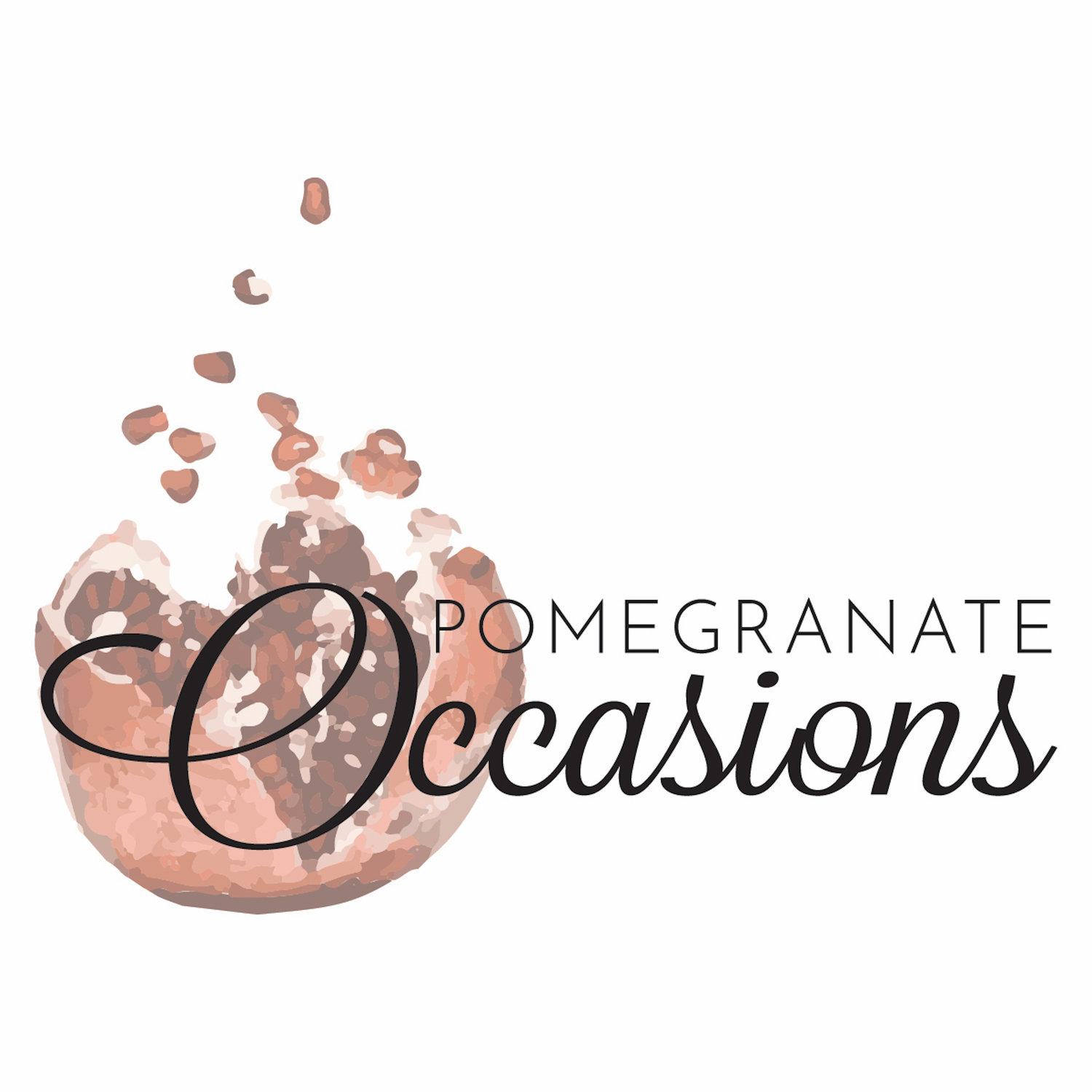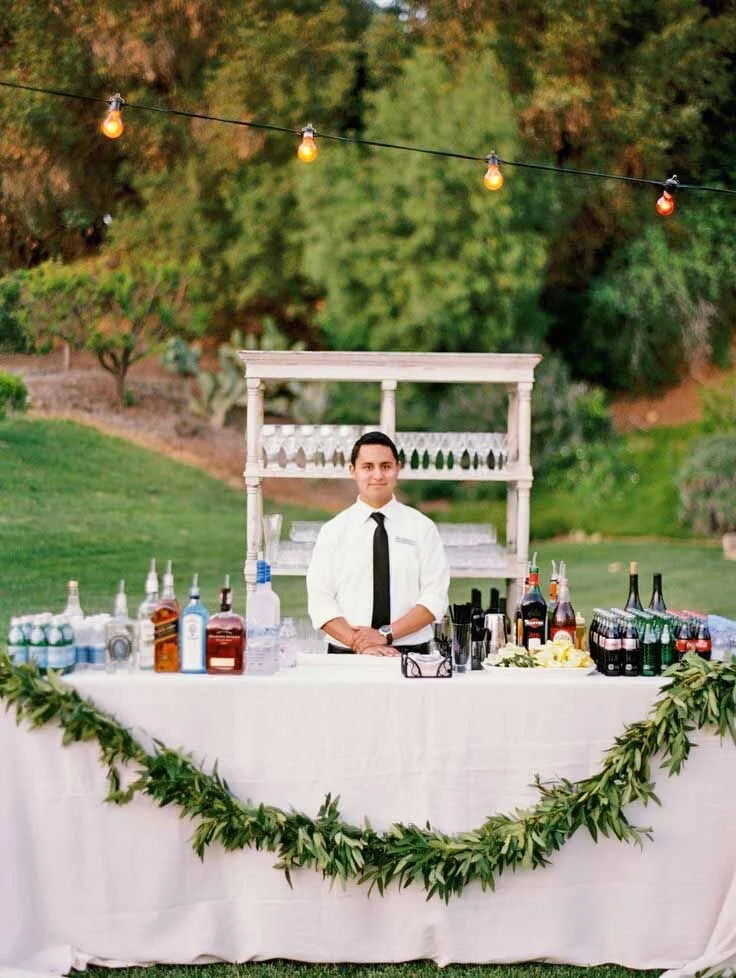How to DIY Your Wedding Bar:
Step 1: What drinks will you serve?
There are three basic types of wedding bars: full bar, modified bar, and beer and wine only. Let’s examine each:
Full bar: If you are set on doing a true full bar, I do not recommend going the DIY route. No alcohol calculator is gonna work for a bar that involves twenty kinds of booze. Rather, work with a professional bartending service and your venue, unless you want to blow most of your budget on half the stock at your local liquor store. We suggest utilizing one of the amazing vendors that are a mobile full bar and can come in, set up, serve, and pack up to leave. These are wonderful, efficient, and head-ache free. Inquire with us for our personal recommendations specific to your area.
Modified bar: It’s easy to get bogged down in feeling like you have to offer everything, and that’s just not true. I’m a fan of picking a few specialty drinks that you as the couple love and are crowd pleasers, and do those things well. Most couples decide to offer a signature big batch cocktail or two and three beer and wine selections.
Beer and wine only bar: works really well for a wedding. If you choose to only offer beer and wine, it’s much less complicated to navigate and buy for and you do not need the expertise that comes with hiring a professional bartender. Four beers and four wines is considered an good array of choices.
Step 2. How many drinks will you serve?
A general rule of thumb is to multiply the number of guests by the length of the party in hours (1 drink per person per hour). Now, for most parties, if you’re only offering wine and beer, figure 60% of guests will drink wine and 40% will drink beer. That said, you know your guests best and can hopefully guess some of their preferences. Given the general rule, if your reception lasts 3 hours and you have 150 guests, you’ll serve 450 drinks – 180 beer, 270 wine.
We prefer BevMo’s alcohol calculator to estimate the drinks and calculate the purchase. But if selecting a drink with a liquor additional calculations will be needed. See our blog on batch cocktails for this.
Step 3: How many drink stations will you have?
It is common to have two or more bars running during the cocktail hour when guest traffic is at its peak. After the rush of cocktail hour, one bar is kept running while the other one(s) are usually removed. Glasses, mixers and alcohol are moved to the main bar, which will run for the rest of the evening. For each additional bar you have, increase the number of glasses by 50%.
No matter what kind of bar you decide on, you’ll need two tables, one for the front of your bar, where guests will line-up, and one in the back for your bartenders to use as a work surface and storage. Event rental companies rent out taller tables for use as a bar, or actual portable bars designed for just this purpose, but a regular table works fine too. For the tables, it’s nice to get a long tablecloth to hide any cases or coolers.
Step 4: What glassware will you serve your drinks in?
This handy Microsoft Excel spreadsheet quickly calculates your estimated glasses needs. Enter your guest count and select drink types to configure your glass counts.
While rental companies carry a wide range of glassware, they typically fall under five categories: wine glasses, water glasses, bar glasses, all-purpose glasses, and specialty glasses, such as martini, champagne, or brandy.
Depending on what you plan to serve, you have different options. In all cases, companies rent by the rack, which may force you to adjust your numbers up or down. The upside is you know if any are missing when the items are gathered up at the end of the night (or next day). For some glass types, you might err on the side of too many as the rental of one rack of unused glasses is cheap compared to the embarrassment of running out of glasses. Very few bartenders have the time or the means to wash glasses in the middle of your event.
Water
Keeping everyone hydrated is important, so you should plan for every person to have a water glass. Most rental providers offer a water goblet (fancier) and traditional highball glass, which works as a water glass. For a 150-person wedding, plan for 150 water glasses for the table settings, plus extra for vendors and water requests at the bar. Water goblets come 25 to a rack; highballs 36 to a rack.
Wine
Wine glasses, typically available in 8 ½-ounce and 13-ounce sizes, are used just for wine. Generally, you should have 3-4 glasses per wine drinker. This allows for multiple drinks and takes into account that glasses get misplaced or forgotten. Taking our earlier equation, for 150 guests you should plan to rent 270 wine glasses. Wine glasses come 36 to a rack. If you’re planning to have a wine glass at the table as part of your place setting, which is customary, you would add another 150 wine glasses in this example.
Beer
Serving beer in bottles or cans? Then there is no need to have glasses for your beer drinkers. However, for the occasional beer drinker that wants a glass, a water goblet or highball glass work just fine. If you’re having a keg, you might consider renting pint (come 25 to a rack) or pilsner glasses (come 36 to a rack). As the night progresses and the reception gets more “relaxed,” we recommend switching to plastic cups. It makes clean up faster after your bartender has left and reduces the risk of broken or missing glasses.
Champagne
If you’re planning a champagne toast at the reception, everyone, save for the very young children, needs a champagne flute even if they don’t really drink alcohol. It’s important to keep the traditional toast alive. Again, that’s another 150 glasses to include in your rental order. Champagne flutes come 36 to a rack.
Mixed Drinks
A growing trend for wedding receptions and a fancy touch for any party is to offer guests a signature cocktail. For these, you should figure needing 1 glass for 75%-100% of your guests, excluding children. If the drink is a martini, you’ll want martini glasses. Otherwise, you can use 10.5-ounce old-fashioned glasses, which is a popular glass as it’s shorter, looks fuller with less alcohol, and therefore controls portions. Otherwise, a taller 12.5-ounce highball glass can be used. Martini glasses come 16 to a rack; highball glasses 36 to a rack; old fashioned glasses 25 to a rack.
Hard Liquor
If you’re making hard liquor available, such as scotch or whiskey, old fashioned glasses are recommended. Expect 10% or less of your crowd to order a whiskey/scotch, but will vary depending on whether you have an open or cash bar. As mentioned earlier, you know your guests best and can determine if this number will be higher. Old fashioned glasses come 25 to a rack.
Step 5: Will staff wash glasses during the party?
In general, the money spent on extra glasses is much less than the cost of having staff wash glasses. If you do have staff help (and water/soap to wash glassware), reduce the number of glasses by 25%. If not, reduce the number of glasses by 10% (some people will ask to refill their current glass).
Step 6: How to Figure Your Final Glass Count
Now let’s put it all together with an example. You’re having a wedding reception that will last 3 hours and you’re expecting 150 guests (assume all are adults). You plan to have one bar and no staff to wash glasses. You will be serving bottled beer, wine, and mixed drinks, and having a champagne toast before dinner.
According to the formula, you will probably serve 450 drinks from the bar (150 guests x 3 hours), about 180 of them beer (you’re serving bottles, but you will want a few glasses on hand) and 270 will be wine. Therefore, you’ll need:
243 wine glasses (270 less 10% for those who will reuse) so you’ll rent 252 8.5-ounce wine glasses (come in racks of 36) or 250 13-ounce glasses (come in racks of 25).
175 water goblets–150 for each place setting and 25 for the bar (come 25 to a rack).
Figure 20-25% of your drinks from the bar will be for mixed and non-alcoholic drinks, so you can rent 100 old fashioned glass (come 25 to a rack) or a highball glass (36 to a rack).
For the champagne toast, you’ll have the bartender(s) pass filled glasses. Not everyone likes champagne and may opt to toast with their existing drink. You know your guests best, so plan accordingly. Champagne flutes come 36 to rack, so you’ll need to rent either 4 racks (144 glasses) or 5 racks (180 glasses). Extra glasses will go to the bar to serve any leftover champagne.
Step 7: What else will I need?
The key to setting up a successful bar is a well stocked bar. Your professional bartender should help with these discussion but should include a minimum of:
WINE KEY: At least two for every bartender. Get the kind with the jointed pull; they are by far the easiest to use.
BOTTLE OPENER: At least one per bartender. These are simple and classic, and bartenders usually like them.
SMALL BUCKETS: These are for storing ice on the top of your bar for mixing in with drinks. This kind of thing works well, but you can improvise a little with another sort of bucket or deep plastic pan or tub. You’ll need more for a full bar than for beer and wine only.
AN ICE SCOOP: At least one for every ice bucket you’re setting up on top of the bar.
BAR RAGS: One for every hour for each bartender, plus a few more to keep everything tidy. They are sold in packs of 24 at restaurant supply places, or even bigger packages at Costco.

